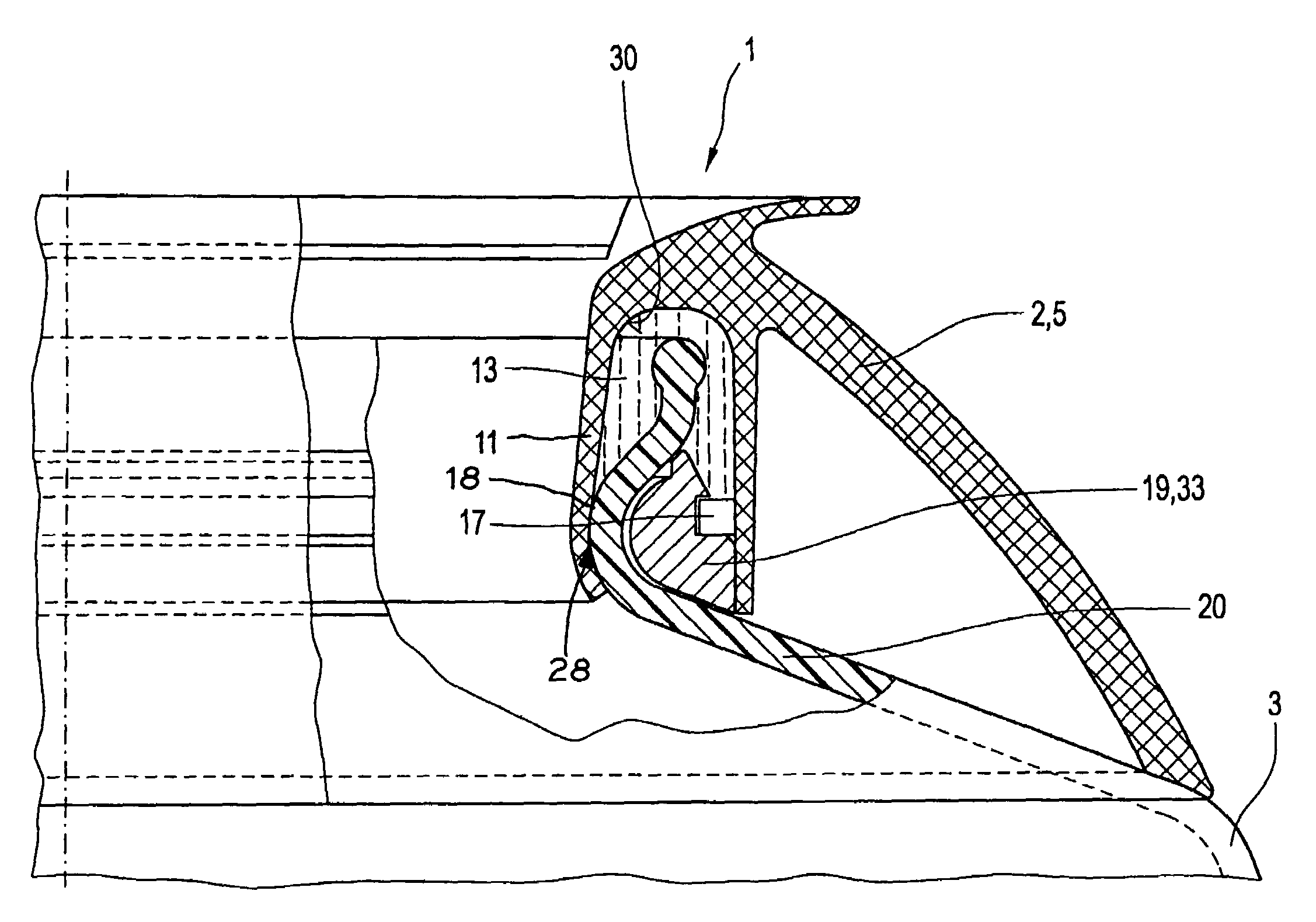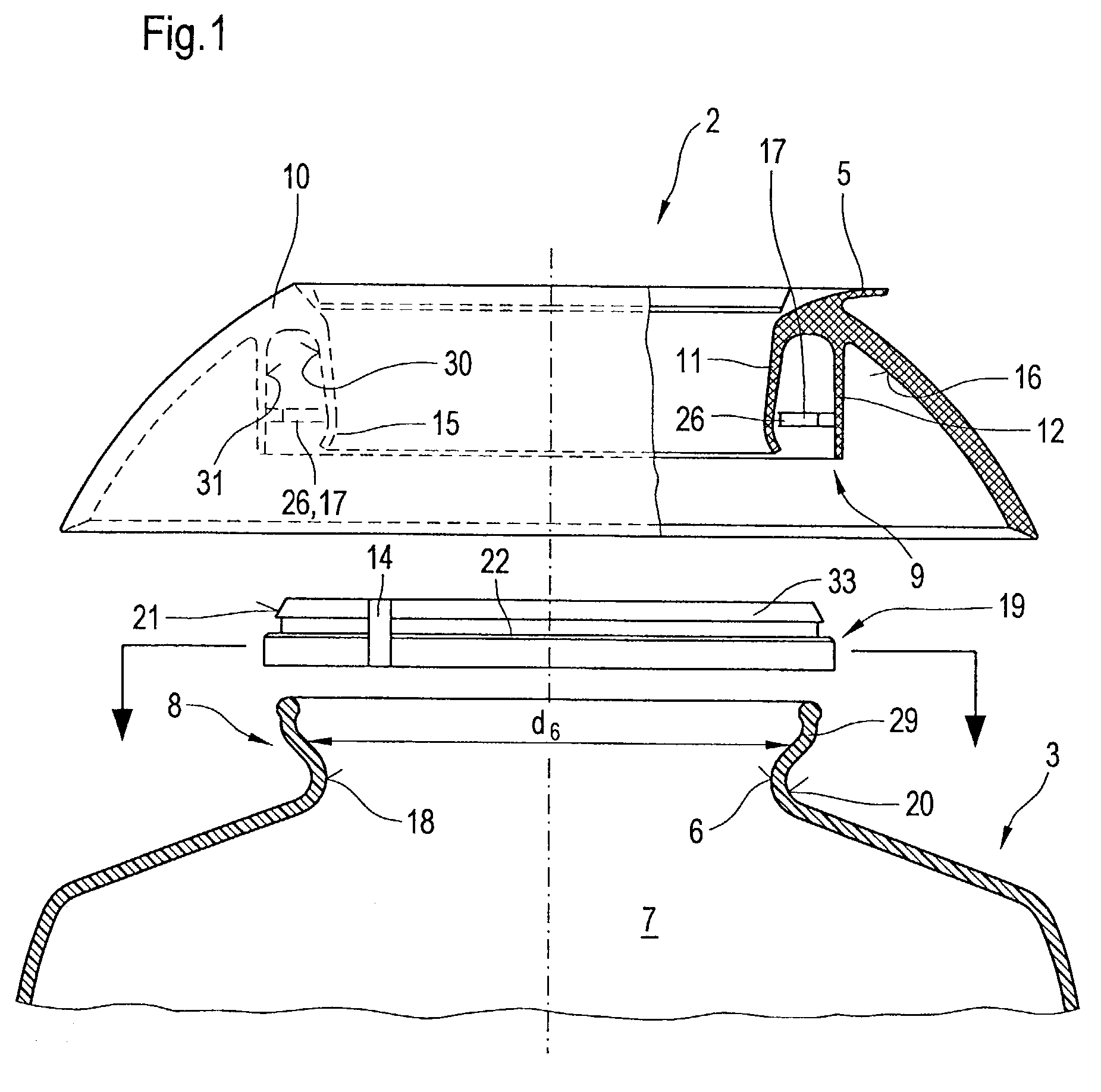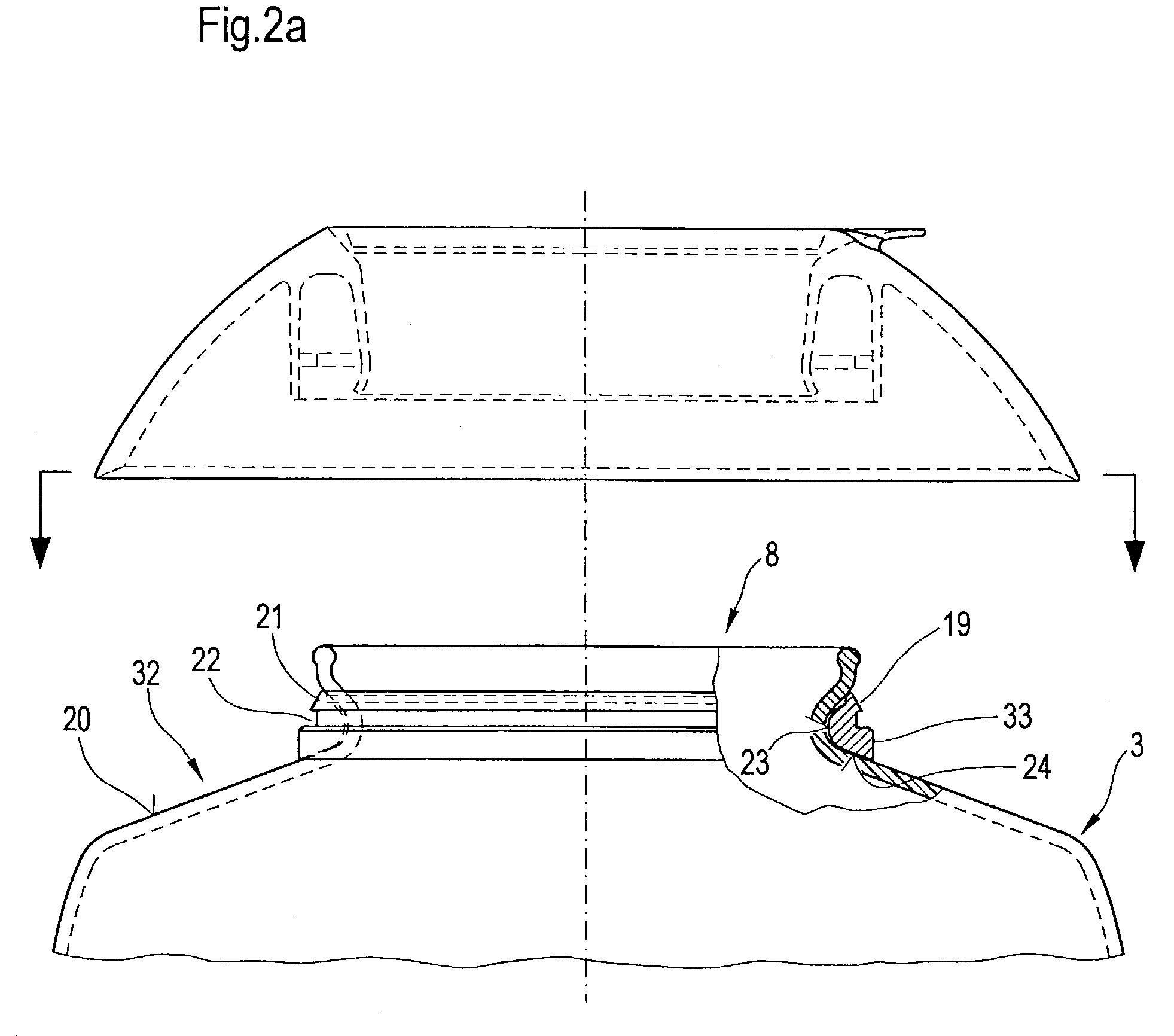Bonding of a plastic fixture to a glass container
a technology for plastic fixtures and glass containers, applied in the direction of container/bottle construction, rigid containers, domestic vessels, etc., can solve the problems of glass breakage, poor bonding properties, safety risks, etc., and achieve the effect of less cross-section
- Summary
- Abstract
- Description
- Claims
- Application Information
AI Technical Summary
Benefits of technology
Problems solved by technology
Method used
Image
Examples
Embodiment Construction
[0024]FIG. 1 illustrates in schematically greatly simplified presentation using lateral views and in part axial sections the basic structure of the individual elements for achieving a permanent bond 1 of a plastic fixture 2 on a glass container 3 in a view of the situation prior to assembly. If the glass container 3 is a coffeepot or teapot, the plastic fixture 2 is constructed in the shape of a pouring ring or pouring brim 5. In accordance with the purpose of the glass container 3 the plastic fixture 2 can also assume other forms.
[0025]The glass container 3 has an opening 6 for receiving and dispensing of filling fluid in and / or out of the interior 7 of the glass container 3. The glass container 3 is constructed in the vicinity of the opening with a lesser diameter d6 compared to the remaining interior 7. The area in which the opening 6 is arranged functions as a receiving and / or dispensing area is referred to as the opening area 8. This extends in functional location of the glass ...
PUM
 Login to View More
Login to View More Abstract
Description
Claims
Application Information
 Login to View More
Login to View More - R&D
- Intellectual Property
- Life Sciences
- Materials
- Tech Scout
- Unparalleled Data Quality
- Higher Quality Content
- 60% Fewer Hallucinations
Browse by: Latest US Patents, China's latest patents, Technical Efficacy Thesaurus, Application Domain, Technology Topic, Popular Technical Reports.
© 2025 PatSnap. All rights reserved.Legal|Privacy policy|Modern Slavery Act Transparency Statement|Sitemap|About US| Contact US: help@patsnap.com



